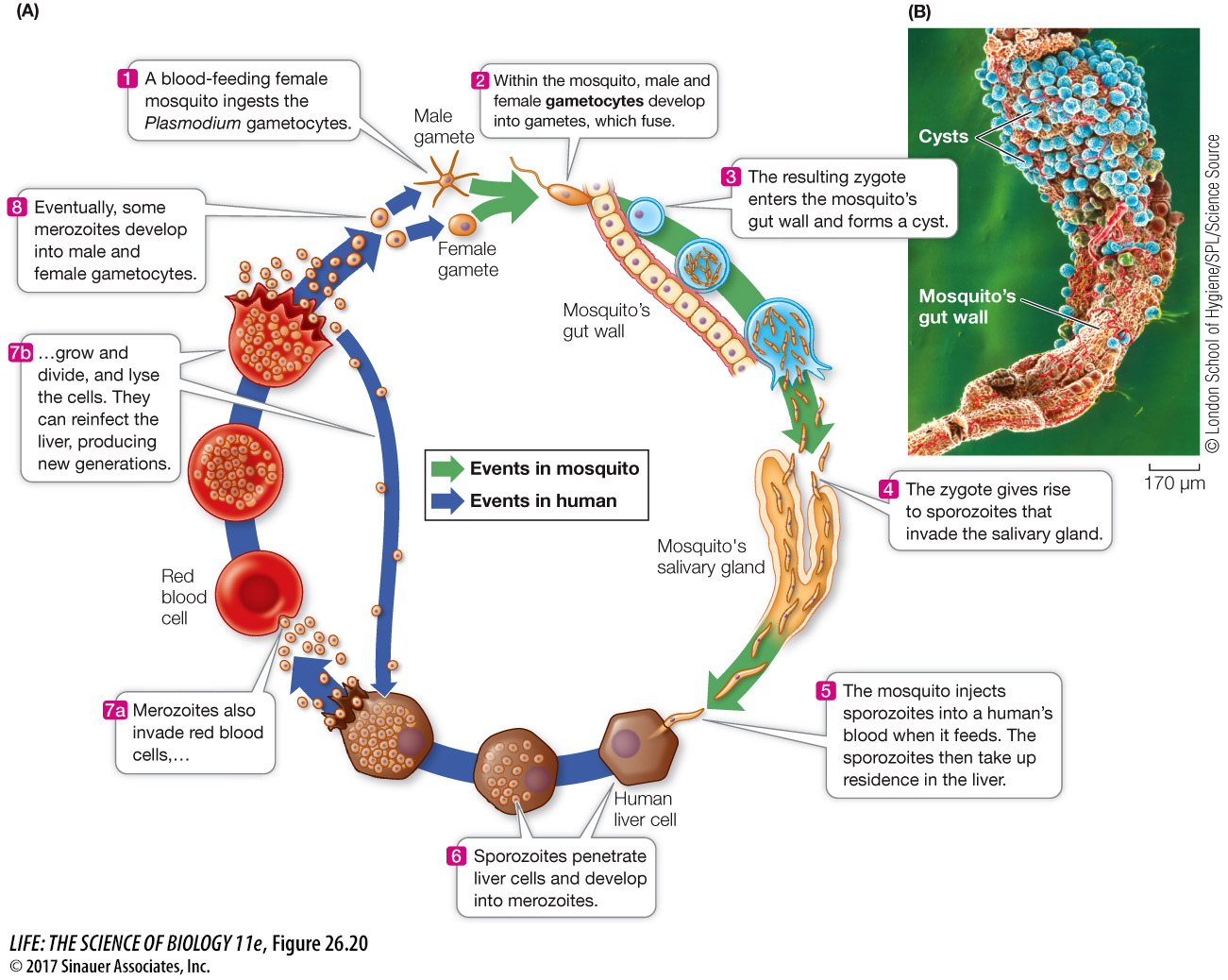Some microbial eukaryotes are deadly
Some microbial eukaryotes are pathogens that cause serious diseases in humans and other vertebrates. The best-
Mosquitoes of the genus Anopheles transmit Plasmodium to humans. The parasites enter the human circulatory system when an infected female Anopheles mosquito penetrates the skin in search of blood. The parasites find their way to cells in the liver and the lymphatic system, change their form, multiply, and reenter the bloodstream, where they invade red blood cells.
The parasites multiply inside the red blood cells, which then lyse (burst), releasing new swarms of parasites. These episodes of bursting red blood cells coincide with the primary symptoms of malaria, which include fever, shivering, vomiting, joint pains, and convulsions. If another Anopheles bites the victim, the mosquito takes in Plasmodium cells along with blood. Some of the ingested cells develop into gametes that unite in the mosquito, forming zygotes. The zygotes lodge in the mosquito’s gut, divide several times, and move into its salivary glands, from which they can be passed on to another human host. Thus Plasmodium is an extracellular parasite in the mosquito vector and an intracellular parasite in the human host (Figure 26.20). Such an organism—

Animation 26.3 Life Cycle of the Malarial Parasite
Plasmodium has proved to be a singularly difficult pathogen to attack. The complex Plasmodium life cycle is best broken by the removal of stagnant water, in which mosquitoes breed. Using insecticides to reduce the Anopheles population can also be effective, but the benefits must be weighed against the ecological, economic, and health risks posed by the insecticides themselves.
Even some of the phytoplankton that are such important primary producers can be deadly, as described in this chapter’s opening story. Some diatoms and dinoflagellates reproduce in enormous numbers when environmental conditions are favorable for their growth. In the resulting red tides, the concentration of dinoflagellates may reach 60 million per liter of ocean water and produce potent nerve toxins that harm or kill many vertebrates, especially fish.